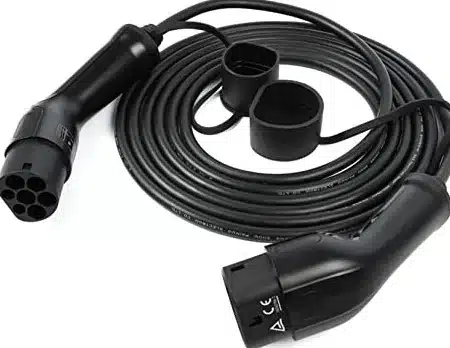
Type 2 EV Charger
A Type 2 EV charger is more secure and can charge a high-capacity battery in 20 to 40 minutes. Its precise internal structure means that you should never attempt to dismantle it without professional technical support. Moreover, you should avoid attempting to use the charger for any other purpose other than charging an EV. Hence, it is advisable to contact the manufacturer’s Customer Service Manager in case of any concerns.
Rapid AC chargers charge a battery to 80% in 20-40 minutes
A rapid AC charger can add one hundred or more miles to a battery in twenty to forty minutes. But the rate at which the battery is charged will be slowing down as it approaches 80 percent. A 50kW rapid charger will add one hundred miles to a battery in 20 minutes, but a 150kW charger can add the same number of miles in ten minutes. Unlike a normal charger, a rapid AC charger must have a large battery because smaller batteries are not capable of absorbing this amount of energy.
In general, a rapid AC charger will charge a battery from empty to 80% in 20 to 40 minutes. It takes longer to charge a larger car battery or a slower charging point, so this will affect the charging rate. Also, the range of a battery depends on various factors, including driving conditions, personal driving style, and climate, as well as the car’s heating and air conditioning system. In addition, the charging rate can limit the amount of time a battery can be charged.
Mode 3 charging cables are ideal for high-capacity EVs
EV chargers are available in two types: Type 1 and Type 2 EV Charger . The former is the standard cable that is delivered with most electric vehicles. Both types use a plug that corresponds to a standard wall socket, while the latter is only available on some older Asian brands. However, high-capacity EVs require a high-capacity charger. To ensure a fast and efficient charge, a high-capacity charger should use a Type 3 charging cable.
The safety of the charging cable is another factor to consider. In most cases, only the EV owner can unplug the cable from the EV’s connector. However, there’s no locking pin on Type 1 plugs, meaning that someone else could unplug the cable. A type 2 EV charger plug has pins for the power load and an earthing mechanism. In addition, the type 3 chargers are more secure than the Type 1 ones.
Type 2 EV Charger cables are more secure
There are several ways to protect your EV cable. One option is to wrap the cable around the tyre of your car, and then secure both ends with a padlock. Another option is to use a cable lock at the public charging point. While this is not foolproof, it does deter thieves and provide evidence should they break into the charging point. Another option is to install CCTV cameras in public charging areas. A camera will also act as a deterrent and will provide evidence of theft.
In addition to protecting your EV battery, you should also pay attention to the charging cable’s inlet. Some cables come with Type 1 connectors, while others are only available in Type 2 EV Charger plugs. Type 2 EV Charger inlets are the current standard, while Type 1 connectors are often used in older Asian brands. In addition to protecting your battery, a high-quality charging cable should be as light as possible, and waterproof to IP54 standards.
ChaoJi EV charger enables DC charging with over 500 kW
The CHAdeMO Association, which governs the standards for charging electric vehicles , recently announced the release of a new high-power protocol called CHAdeMO 3.0. The new protocol, whose release date has not been confirmed, will use a plug type compatible with the GB/T standard. The CHAdeMO 3.0 protocol would enable long-range electric vehicles to recharge their driving range in as little as 15 minutes.
According to the press release, the new standard supports charging rates of up to 500 kW and 600 amperes. It will also have liquid-cooled cables and plugs. Once it is released, it is expected that the first vehicles with this standard will begin operating in 2021. Commercial vehicles will be the first models to support the new standard. All other vehicle types will follow, starting in 2022.
